
One of the unsung success stories of the last decade has been the Subaru XV.
Chunky, pretty and accessible, it regularly hits the top five on the small SUV charts, is the brand’s number two performer after Forester and accounts for about one-quarter of all Subaru sales.
That the Japanese marque has managed to make tens of thousands of Aussies believe the XV isn’t just an Impreza in stilettos is a feat in itself, because before the G4X ‘original’ that started it all in early 2012, the name debuted on a G3 Impreza grade two years earlier. And that sprang from the garish G2 Impreza RV variant sold in Oz from 2001 to 2007. Glossy bumpers and shiny alloys, anybody?
Which raises an intriguing question: given the XV’s enduring popularity, why aren’t our roads clogged with jumped-up, plastic-clad and bigger-bumpered Mazda3, Toyota Corolla and Hyundai i30 crossover hatchbacks?
Oh, hang on, someone has. It’s the wallflower from the Fatherland… please step on up, Ford Focus Active.

Launched in mid 2019 – some two years after the G5X XV landed – the SA-series Active is nowadays an entry-level model in the fourth generation of Ford’s European small car range, alongside the ever-slightly cheaper (and Wheels comparison winner – see March, 2019 issue) ST-Line.
To recap, virtually nothing carries over from the previous Focus iterations, with an all-new C2 architecture that’s far stronger yet lighter and a striking body styled by a young Melburnian. Fun fact, that.
Being crossover-focused, the Focus crossover follows the now well-worn SUV trope of extra ground clearance (though just 30mm up front and 34mm out back), restyled bumpers, lined wheelarch lipstick, an off-road specific suspension tune, extra driving modes (that in Active alter transmission and traction software), distinct alloys brandishing beefier tyres, unique interior trim and roof rails. Time to escape the city.
All the crossover clichés, in other words, with most dreamt up decades ago by who? Subaru, that’s who.
The XV you see here is the super-subtle Series II facelift launched in mid 2020, ushering in small alterations to the grille, bumpers, fog lights and wheels, as well as bigger changes to the suspension, including upgraded springs and dampers. Keep that in mind.
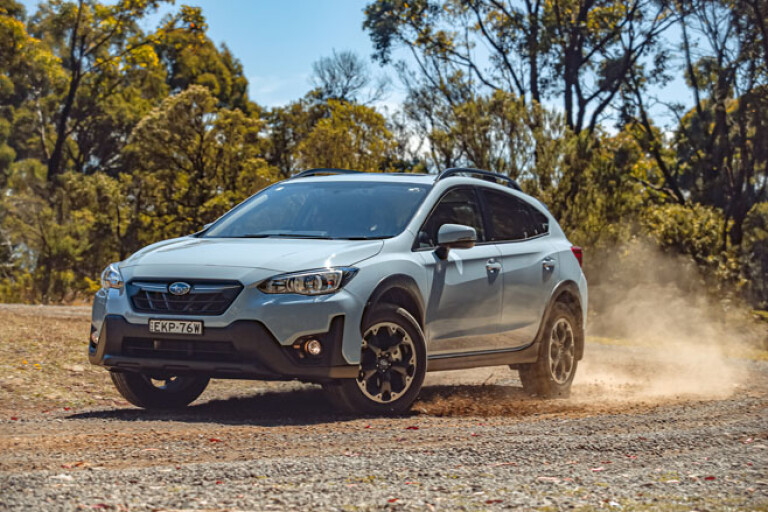
Besides the entire Focus range finding fewer than 1900 buyers last year against the XV’s 8000, two sizeable differences between the pair are that the Subaru offers a whopping 90mm of extra gap between road and underbelly – 220mm versus the Focus’ half-baked 163mm – and is all-wheel drive; the Ford is front-drive only.
These, along with a starting price of $29,690 compared to the Active’s $30,990 means the XV snatches a strong early lead in the eyes of lifestyle-loving shoppers.
Subaru’s base 2.0i is no barren wasteland either, with seven airbags, keyless entry/start, reverse camera, rear parking sensors, climate-control air-con, Bluetooth audio streaming and telephony, digital radio, Apple CarPlay/Android Auto connectivity, powered folding mirrors, paddle shifters and handsome 17-inch alloys.
But not all XVs are created equal. One omission is Autonomous Emergency Braking (AEB), since it is unavailable on the cheapest grade – unlike in Focus – and that’s not on in 2021. If tested today by crash-test specialists ANCAP, it would lose a star rating. Strewth!

The $31,990 2.0i-L remedies this with the branded ‘EyeSight Driver Assist Tech’ so should be your XV jumping-on point. It also ushers in safety like adaptive cruise control, lane departure warning, lane keep assist, pre-collision braking, post-collision braking and lead-vehicle start alert (you should keep your eyes on the road at all times, people!), as well as a leather wheel, 1.5-inch larger centre touchscreen, an extra USB port, dual-zone climate control and classier trim. $2300 well spent.
The Focus, meanwhile, mostly matches the XV 2.0i-L’s kit (minus AWD, a driver’s knee airbag, adaptive cruise and lead-vehicle start alert), bolsters its AEB with pedestrian and cyclist detection, and then goes further with wireless charging, WiFi hotspot, satellite navigation, dusk-sensing and cornering headlights, rain-sensing wipers, front parking sensors, traffic-sign recognition tech, remote-power window opening/closing, Ford’s MyKey multi-driver settings memory and 180-degree rear-camera view, among other gizmos.
Note, however, that the Active’s $1250 Driver Assistance Pack (as fitted to our Focus) is necessary and recommended to equal the 2.0i-L’s adaptive cruise and auto high beams, but also introduces blind-spot monitor and rear-cross-traffic alert that is only offered from the $34,590 XV 2.0i Premium up (as tested here), while also throwing in a sunroof, front-view camera, heated mirrors and reverse automatic braking.
Including the Active’s Driver Assistance and $2000 Panorama Roof packs (comprising a massive opening glass panel but deleting the roof rails), only $350 separates our $34,240 Focus and $34,590 XV Premium… or just $31 when driveaway pricing is factored in ($38,637 versus $38,668 respectively).
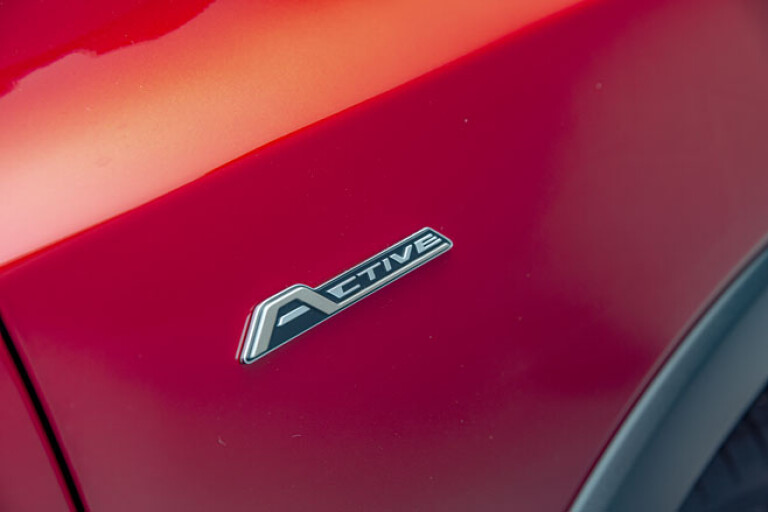
On paper, comparisons don’t come much closer than this… or diverge from each other as profoundly in reality, and this juxtaposition between the Ford and Subaru absolutely defines them; two more different personalities between cars aimed at similar demographics would be difficult to find.
Take their similar sizing but varying stance. Because it stands so much taller than the Focus, the XV feels substantially larger – like an SUV that’s been unapologetically beaten down into a hatch. Opening the wide-aperture doors and swinging yourself onto hip-high seating further supports such notions. Spacious, airy and glassy, the Subaru seems super roomy.
Despite its ambitious ‘Premium’ suffix, nobody will mistake the sheeny plastics, chunky dash and messy data-overload info display perched on top of the centre console like some sort of afterthought as such, but the exquisite build quality and beautifully crafted trim would make most luxury brands proud, with our XV never emitting a single zizz or rattle on test. Even over rough stuff.
Throw in a lofty driving position aided by excellent all-round vision, copious ventilation (front and rear), wide yet soft seating and storage to embarrass Kennards, and it is immediately clear why these Subarus have struck a chord with consumers. If you need the space and ambience of an SUV but without the bulk, step right up, folks.
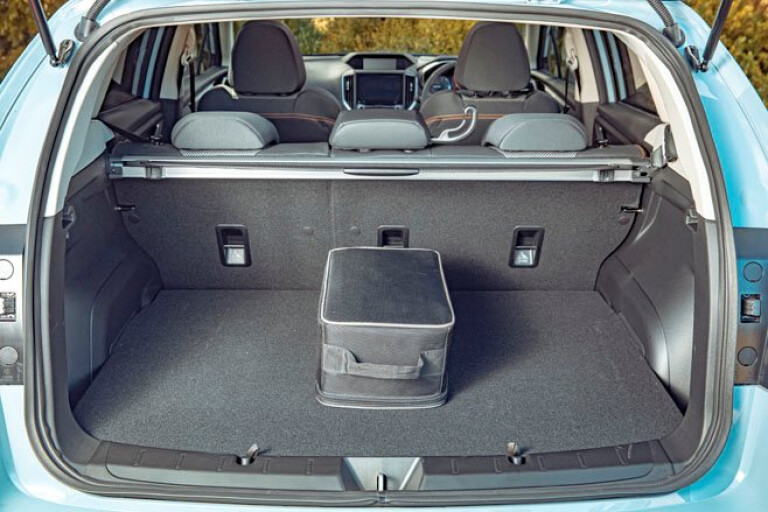
In contrast, the Focus feels like My First Crossover, a cautious attempt to cash in on a craze that frankly demands more commitment and courage than Ford has been prepared to give.
First impressions aren’t strong. The Active’s interior seems small and tight compared to the expansive XV’s from the moment you find yourself stooping to clear the roof, and once inside, the mish-mash of shapes and plastics speak of earlier, drearier interior themes. Barely rising above the smaller Fiesta’s for ambience or quality, the missing rear air vents, centre armrest, back-row cupholders and front passenger seat height adjuster (in a German-made Ford!) smack of penny-pinching.
Don’t be deceived though. Yes, the XV feels palpably larger inside, but the longer-wheelbase and wider-tracked Focus also offers space to stretch out up front and more than sufficient rear legroom, so is far from cramped. Comfy and cosseting outboard seating keep their occupants securely located even through tight fast corners while the driving position is first class.
A thumbs-up, too, for the superbly weighted controls, backed up by ample ventilation (that reaches out back), way-more intuitive SYNC3 voice-actuated multimedia interface, thoughtfully located phone charger and USB ports and sufficient nooks and crannies for odds and ends. Even the door bins are flocked. Our only real bugbear was a constant rattle coming from the sunroof trim. Untick that option, please!
It’s worth pointing out that while the Focus boasts marginally greater cargo capacity – 341 litres versus the XV’s 310L – in practice, the Ford’s boot is usefully deeper and downright cavernous once the rear backrests are folded. Parents with small children take heed.
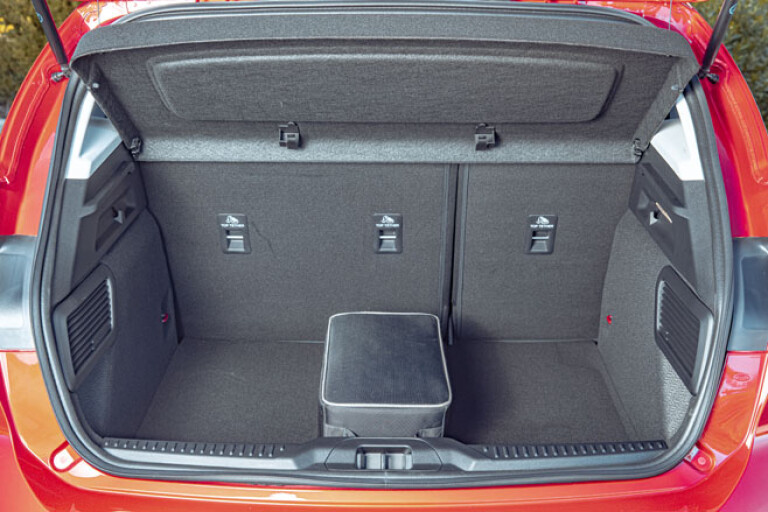
And, actually, the numbers also work in the Active’s favour at the other end of the car too, especially when it comes to speed.
In the Blue Oval’s corner, a 1.5-litre twin-cam 12-valve three-cylinder turbo drives the front wheels via a conventional eight-speed torque-converter automatic, while in the, err, boxer’s corner is Subaru’s 25 percent-bigger 2.0-litre 16-valve naturally-aspirated horizontally-opposed four-cylinder engine, powering all four wheels via a continuously variable transmission (CVT). Will size reign supreme?
No. Weighing in at a lithe 1348kg, the Ford’s three-pot turbo is right at the 100kW per tonne threshold, thanks to remarkable 134kW and 240Nm outputs, against the 1474kg XV’s 115kW and 196Nm, managing a more mundane 78kW/tonne. You can see where this is going.
Right from the get-go, the Focus is the stronger, fiercer performer. Remarkably, with barely a whiff of turbo lag, this lusty little powerhouse storms off the line and punches up through its eight ratios with terrific zeal and zest, barely taking a breath as it bolts past the 100km/h marker, seemingly sooner than its 9.1 seconds suggests. Not as rapid as our ST-Line’s 8.2s back in 2019 – we’re blaming forceful crosswinds – but nearly two seconds ahead of than the XV… Which. Simply. Won’t. Be. Rushed.
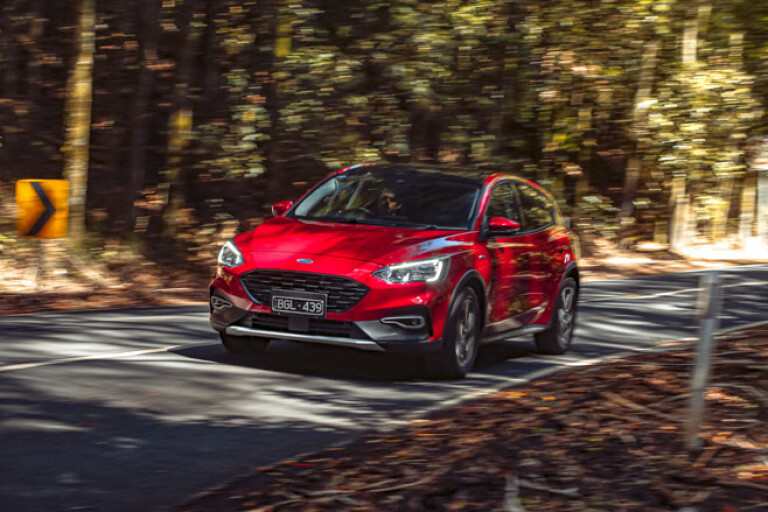
There’s a determination in the way the Active lunges forward that’s a little intoxicating, and by the time the speedo is showing 140km/h the Ford’s a yawning 4.3s in front. Likewise, in the 80-120km/h increment the Focus really starts to pull away.
We’re not suggesting the XV is slow. Thanks to some deft CVT tuning, it initially accelerates with satisfying urge… until about 50km/h, when power starts to level off. Suited to most urban commuting, then, and surprisingly brisk for darting through traffic. But there just isn’t quite enough muscle at higher revs, with the engine moaning rather than actually really moving when flooring the throttle at speed. The Subaru cries out for a deeper set of lungs.
Both cars offer performance modes. In the Focus it’s a laughably innocuous ‘Sport’ button that – when eventually discovered – extends the transmission’s change-up points for prompter responses, while the ‘S’ rather than default ‘I’ setting allows the XV’s CVT to also hold on to the pre-determined ratio band for longer. Like popping a Panadol Rapid or two, both are unexpectedly effective.
But ultimately the Subaru prefers to work up speed at its own, leisurely pace, and when not racing against a stopwatch, can be a spry point-to-point performer in its own right. It’s as if the XV takes long but considered strides while the Focus is a frantic sprinter.

So, it’s a shock to learn that the frenetic Focus is easier on unleaded, highlighting its inherently efficient engineering. Given our broad spectrum of testing – from inner-city to desolate rural in blazing heat and air-con working overtime – the Active’s 8.8L/100km result is a win. While the XV is alone in tolerating standard 91 RON, both were tested using the premium brew.
Less unforeseen is the Focus’ sportier chassis set-up. Adhering to the series’ strapping reputation, and featuring a multi-link rear suspension set-up as per all grades nowadays (compared to the Subaru’s double wishbone arrangement), the Active’s steering is beautifully weighted and naturally immersive, effortlessly connecting car and driver.
Unburdened with extraneous mass, the Ford’s front end changes direction with delightful alacrity, for incredibly fluid handling and fantastic poise, while also pulling up sooner during our emergency-braking tests than the XV.
Most SUVs could only dream of dynamics like this.

Even with that humdinger engine response, the Focus feels like it could handle substantially more power, as it blasts along and carves through corners like no other mainstream humdrum hatchback at this price – ST-Line aside. Nothing is as fluent, fun or sophisticated, period.
Yet the Subaru is far from outclassed, with a super-smooth and easy gait as it glides along, unbothered by adverse conditions or iffy surfaces. Though the steering feels duller and more remote in this company, there’s endless grip and control galore as compensation, making it seem completely immune to the elements, for reassuring and relaxing handling and roadholding characteristics. And there’s the rub: the XV isn’t pretending to be athletic, yet still possesses agility combined with security that makes it the better all-weather performer. AWD, remember.
Sure, the Subaru might feel gutless at higher speeds, but its chassis is so strong and planted you can drive it flat-out, everywhere where legal, all the time. Imagine what a turbo heart transplant would do? Now’s the time for an XV WRX.
Speaking of which, over gravel, the latter’s substantially loftier ground clearance also comes to the fore, as it skates along the surface at speed without a care. Tighter turns reveal a fast and loose stability-control set-up, but the taction nannies do reel the Suby back in line and in plenty of time. The Focus’ Trail mode, meanwhile, also provides an extra bit of play and it too keeps things moving along safely, but isn’t in the same league as the Japanese crossover. Not without the surefooted advantage of AWD.
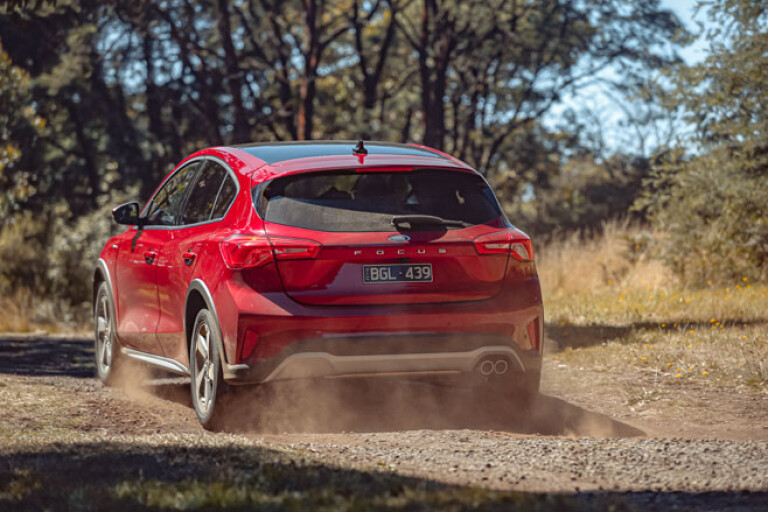
Where the XV absolutely lords it over the Ford is in its newfound ride comfort – a revelation since the pre-2020 facelift models felt stiff and unyielding. No longer. Our Premium wearing 225/60R17 rubber finally earns the name with an absorbent and calming suspension quality. Combined with massively reduced road noise, there’s an almost old-school Citroen-esque softness in its ability to smother bumps.
In contrast, you feel (and hear) the road and all its irregularities more in the firmer, louder and lustier Focus, though it isn’t crashy or hard, displays markedly less body lean when cornering or head toss traversing speed humps, and remains miles ahead of most sporty premium rivals like BMW’s 1 Series and Mercedes’ A-Class. It’s just that the newly-spongy Subaru has, quite astoundingly, reset the cushy suspension benchmark. We still cannot believe it.
Which must factor heavily in the latter’s favour when assessing two mainstream small crossovers priced so tantalisingly close to each other. Most buyers will happily trade in hot-hatch levels of athleticism and connection for quiet, smooth and cocooning suppleness.
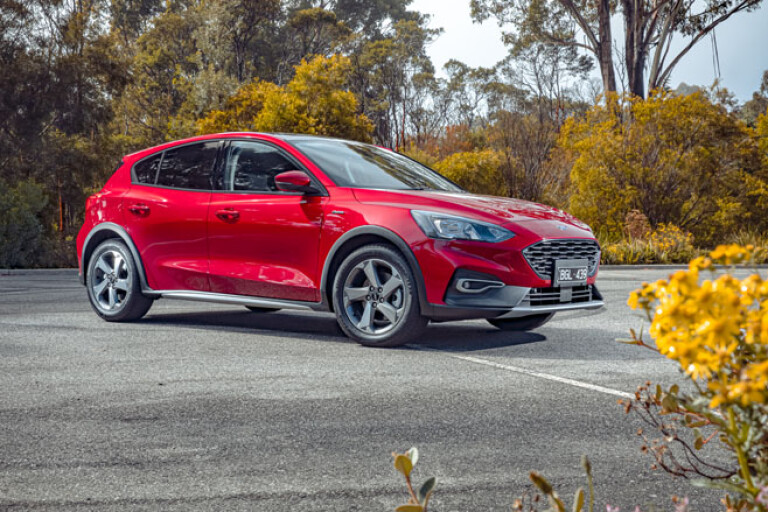
The XV is like a spacious, soothing and secure hovercraft on wheels that also happens to be a very good drive while the Active is like a fast and efficient speedboat that’s unrivalled for fun. Ultimately, despite differences that are worlds apart, the net result leaves us with two accomplished competitors that really play into their brands’ strengths. It’s incredibly close.
While keener drivers must consider the Ford, the Subaru really is better suited for everybody else, and so with its broader bandwidth of capabilities, just pips the Focus. Either way, though, the jumped-up hatch recipe is a winner that clearly works.
Why more carmakers aren’t following suit remains a mystery. Little wonder the XV is quietly making it big.

Result
Subaru XV 2.0i Premium
Pros: Spacious, airy and inviting cabin, superb ride comfort, AWD security
Cons: Breathless acceleration at speed, no AEB on base model
8.5/10
Ford Focus Active
Pros: Fun handling, rorty performance, excellent efficiency, user-friendly multimedia
Cons: Dreary dash, no AWD option, rattly optional sunroof, barely a crossover
8/10
Ford Focus Active Specifications
$30,990/As tested $34,240**
Drivetrain
Engine 3cyl, dohc, 12v turbo
Layout front engine (east-west), front-drive
Capacity 1497cc
Power 134kW @ 6000rpm
Torque 240Nm @ 1750-5000rpm
Transmission 8-speed automatic
Chassis
Body steel,5 doors,5 seats
L/W/H/W-B 4397/1844/1483/2700mm
Front/rear track 1582/1576mm
Weight 1348kg
Fuel/tank petrol/52 litres
Economy 8.8L/100km (test average)
Suspension Front: struts, A-arms, coil springs, anti-roll bar
Suspension Rear: multi-link, coil springs, anti-roll bar
Steering electric rack-and-pinion
Turning circle 10.7m (2.7 turns lock-to-lock)
Front brakes ventilated discs (282mm)
Rear brakes discs (271mm)
Tyres Goodyear EfficientGrip
Tyre size 215/55R17 94V
Safety
ANCAP rating Five stars (Aus)
Performance
Power to weight 99kW per tonne
Redline/cut-out 6500rpm/6300rpm
Speed at indicated 100km/h 96km/h
Standing-start acceleration
0-10km/h 0.6sec
0-20km/h 1.3sec
0-30km/h 2.0sec
0-40km/h 2.7sec
0-50km/h 3.6sec
0-60km/h 4.5sec
0-70km/h 5.0sec
0-80km/h 5.8sec|
0-90km/h 7.7sec
0-100km/h 9.1sec
0-110km/h 10.8sec
0-120km/h 12.9sec
0-130km/h 15.7sec
0-140km/h 17.9sec
0-400m 16.8sec @ 136.1km/h
Rolling acceleration
80-120km/h 6.3s
Braking distance
100km/h-0 37.9m
Track: Warm, dry. Temp: 30ºC. Driver: Byron Mathioudakis.
Warranty: 5yr/unlimited km. Service interval: 12 months, 15,000km. Glass’s 3-year resale: 48%. AAMI Insurance: $782
** Includes Driver Assistance Pack with adaptive cruise, auto high beams, blind-spot monitor and rear-cross-traffic alert ($1250) and Panorama Roof Pack with sunroof, sunglass holder and illuminated vanity mirrors ($2000)
Subaru XV 2.0 Premium Specifications
$34,590/As tested:$34,590
Drivetrain
Engine flat 4, dohc, 16v
Layout front engine (north-south), all drive
Capacity 1995cc
Power 115kW @ 6000rpm
Torque 196Nm @ 4000rpm
Transmission CVT automatic
Chassis
Body steel,5 doors,5 seats
L/W/H/W-B 4485/1800/1615/2665mm
Front/rear track 1550/1555mm
Weight 1474kg
Fuel/tank petrol/63 litres
Economy 8.9L/100km (test average)
Suspension Front: struts, A-arms, coil springs, anti-roll bar
Suspension Rear: double wishbones, coil springs, anti-roll bar
Steering electric rack-and-pinion
Turning circle 10.8m (2.6 turns lock-to-lock)
Front brakes ventilated discs (295mm)
Rear brakes discs (284mm)
Tyres Yokohama BluEarth E70
Tyre size 225/60R17 99H
Safety
ANCAP rating Five stars (Aus)
Performance
Power to weight 78kW per tonne
Redline/cut-out 6250rpm/6100rpm
Speed at indicated 100km/h 95km/h
Standing-start acceleration
0-10km/h 0.5sec
0-20km/h 1.5sec
0-30km/h 2.6sec
0-40km/h 3.5sec
0-50km/h 4.6sec
0-60km/h 5.6sec
0-70km/h 6.8sec
0-80km/h 7.8sec
0-90km/h 9.2sec
0-100km/h 10.9sec
0-110km/h 12.8sec
0-120km/h 15.2sec
0-130km/h 17.9sec
0-140km/h 20.6sec
0-400m 18.0sec @ 130.1km/h
Rolling acceleration
80-120km/h 6.9s
Braking distance
100km/h-0 39.6m
Track: Warm, dry. Temp: 30ºC. Driver: Byron Mathioudakis.
Warranty: 5yr/unlimited km. Service interval: 12 months/12,500km. Glass’s 3-year resale: 54%. AAMI Insurance: $827

COMMENTS